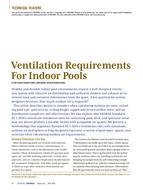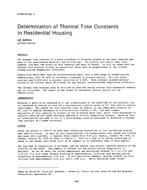The goal for the project was to achieve an energy consumption that is 50% below the 1993 National Appliance Energy Conservation Act (NAECA) standard for 20-ft3 (570-L) refrigerator-freezer units. Based on discussion with manufacturers to determine the most promising energy-saving options, a laboratory prototype was fabricated and tested to experimentally verify the energy consumption of a unit with vacuum insulation around the freezer, increased door thicknesses, a high efficiency compressor, a low-wattage condenser fan, a larger counterflow evaporator, and adaptive defrost control. The resulting energy consumption was 0.928 kWh/day an improvement of 45% compared to the 1996 model baseline unit (1.676 kWh/day) and 54% better than the 1993 NAECA standard (2.006 kWh/day).The cost estimates for these improvements was approximately $134 (manufacturer’s cost). Since this was determined to be too high as to render the improvements infeasible, a second design was investigated. The second unit eliminated the vacuum panel insulation and larger counterflow evaporator. The cost-improved design resulted in an energy consumption of 1.164 kWh/day at a manufacturer’s cost increase of $53. Assuming that there is a 100% mark-up from manufacturer’s cost, the payback for this unit is approximately 6.6 years.
Units: Dual
KEYWORDS: year 1997, Experiment, costs, economics, energy conservation, freezers, refrigerators, domestic, energy consumption, testing, measuring
Citation: Symposium, ASHRAE Transactions, Vol.103, Part 2, Boston 1997
Product Details
- Published:
- 1997
- Number of Pages:
- 9
- File Size:
- 1 file , 1.1 MB
- Product Code(s):
- D-16656


